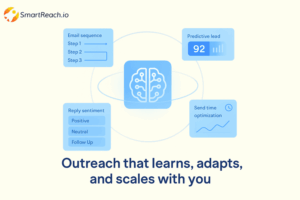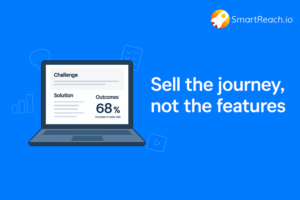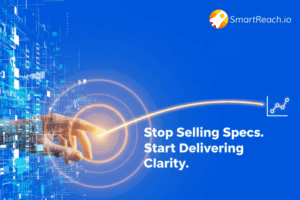How Can Technical Leaders Turn Developer Pushback Into Wins?
For CTOs and engineering leaders, developer pushback isn’t resistance; it’s risk management in action. When your technical team raises concerns about scalability, security, or integration complexity, they’re protecting both system integrity and business continuity.
Instead of viewing these moments as roadblocks, successful technical leaders treat them as collaborative checkpoints that strengthen both technology decisions and team alignment.
This comprehensive guide provides evidence-based strategies to address the eight most common developer objections, transforming potential friction points into opportunities for building more robust systems and stronger engineering cultures.
The business impact of developer objections
Technical objections, when properly addressed, deliver measurable business outcomes:
- 73% reduction in performance-related outages through proactive capacity planning
- $2.3M average savings in downtime costs via systematic performance optimization
- 67% improvement in developer buy-in through proof-of-concept implementations
- 45% faster deployment cycles when security and integration concerns are addressed upfront
Key developer concerns and strategic solutions
Scalability questions: Planning for growth under pressure
Scalability concerns emerge when developers question whether systems can handle exponential growth in users, data volume, or transaction frequency.
These doubts intensify when current architectures rely heavily on single servers or rigid infrastructures that lack flexibility as demand increases.
The most effective response demonstrates incremental scalability through practical examples.
When traffic climbs, you can add new servers to distribute the load, maintaining steady performance without rebuilding entire systems.
This approach becomes even more powerful when applications are designed with microservice architecture, allowing the busiest components to scale independently.
For sales technology platforms specifically, scalability takes on additional complexity. Consider how SmartReach.io addresses this challenge: their platform must scale not just with user growth but with campaign volume, contact database expansion, and simultaneous calling operations.
Their intelligent call routing and automated sequence management demonstrate how modern sales engagement platforms grow seamlessly with team expansion, handling thousands of concurrent connections without performance degradation.
Database distribution across multiple servers reduces single-point-of-failure risks, giving systems room to expand without performance bottlenecks. These architectural decisions gain credibility when supported by concrete evidence. Capacity planning and stress testing reveal how systems perform under extreme pressure, while using an application development platform with built-in scaling capabilities provides additional assurance that growth was considered from day one.
Key Metrics for Scalability Success:
- Load Testing Results: System performance under 10x current capacity
- Auto-scaling Response Times: How quickly resources adjust to demand spikes
- Cost Per Transaction: Efficiency metrics as volume increases
- Database Query Performance: Response times with projected data volumes
Integration complexity: Building bridges without breaking systems
Integration concerns surface when new solutions risk disrupting established workflows or when legacy systems lack clean connection points.
These objections reflect legitimate fears about costly downtime, fragile connections, and long-term technical complexity that can plague organizations for years.
The most successful approach starts with comprehensive planning and clear communication about the integration pathway.
Middleware solutions and robust API management handle the technical complexity, while phased rollouts minimize disruption risks. Sales engagement platforms face unique integration challenges because they must connect seamlessly with CRM systems, phone services, and email platforms while maintaining real-time data accuracy.
SmartReach.io’s integration strategy exemplifies best practices in this area. Their platform connects with major CRM systems like Salesforce, HubSpot, and Pipedrive through well-documented APIs that maintain data consistency without requiring custom development.
When integration concerns arise, they provide sandbox environments for testing connections before production deployment, reducing the risk of workflow disruptions.
Proof-of-concept implementations build confidence by demonstrating compatibility before full deployment. Above all, maintain existing system stability while designing connections that adapt as technology landscapes evolve.
When developers see integration plans that protect current functionality while enabling future flexibility, their concerns typically transform into collaborative problem-solving.
Integration success indicators:
- API Response Times: Sub-200ms for critical business operations
- Data Sync Accuracy: 99.9% consistency across connected systems
- Rollback Procedures: Clear path to restore previous state if needed
- Documentation Coverage: Complete integration guides and troubleshooting resources
Security objections: Building trust through transparency
Security concerns dominate technical discussions because developers understand how single vulnerabilities can compromise entire systems.
They worry about exposed endpoints, insufficient encryption, weak access controls, and compliance with regulations like GDPR, HIPAA, and PCI DSS. Without clear answers, security doubts can halt projects entirely.
Strong security responses begin with threat modeling and comprehensive code audits that identify weaknesses before attackers can exploit them.
The Open Web Application Security Project (OWASP) guidelines provide trusted baselines, while penetration testing demonstrates how defenses perform under real-world pressure.
For sales technology platforms, security objections often focus on contact data protection, email authentication, and compliance with privacy regulations.
When handling sensitive prospect information, platforms like SmartReach.io implement end-to-end encryption, audit trails, and role-based access controls that meet enterprise security standards.
Their compliance documentation addresses GDPR requirements specifically for sales data processing, building confidence with technical teams at regulated organizations.
These protections only maintain credibility through ongoing commitment. Automated monitoring, regular security patches, and compliance audits prove that security remains a priority beyond initial launch.
When documentation transparently addresses both technical implementations and regulatory requirements, developers see comprehensive approaches to both technical risks and legal obligations.
Security Implementation Checklist:
- Penetration Testing Results: Annual third-party security assessments
- Compliance Certifications: SOC 2, GDPR, industry-specific standards
- Encryption Standards: AES-256 for data at rest, TLS 1.3 for transit
- Access Control Metrics: Role-based permissions and audit trail coverage
Performance optimization: Proving speed through measurement
Performance concerns differ from scalability doubts because they focus on current system responsiveness rather than future growth capacity.
Developers raise objections when systems feel sluggish, database queries lag, or response times fail to meet user expectations. Poor performance frustrates users and undermines adoption, even when underlying features provide significant value.
Effective performance management starts with measurement rather than assumptions. Benchmarking and profiling reveal bottlenecks before they reach production environments. Application Performance Monitoring (APM) tools provide visibility into real-world system behavior, making performance optimization a data-driven process rather than guesswork.
For sales engagement platforms, performance directly impacts revenue generation. Call connection delays or CRM synchronization issues can cost deals, making performance monitoring especially critical.
SmartReach.io’s approach includes real-time monitoring of call completion rates, email deliverability, and API response times, ensuring technical performance translates directly to sales outcomes.
With performance data in hand, optimization becomes targeted and effective. Caching strategies, query optimization, and efficient code paths address specific bottlenecks rather than implementing generic improvements. This precision approach builds developer confidence while delivering measurable results.
Performance Benchmarks:
- API Response Times: <100ms for user-facing operations
- Database Query Performance: <50ms for standard operations
- Page Load Speeds: <2 seconds for web interfaces
- System Uptime: 99.9% availability during business hours
Code quality and maintainability: Building for the future
Maintainability concerns arise when developers look beyond immediate releases and consider long-term system evolution.
Clean, well-structured code runs smoothly today, but tangled or inconsistent implementations turn minor changes into frustrating obstacles later. When developers push back against shortcuts, they’re warning about technical debt, those small compromises that accumulate until they block meaningful progress.
The solution involves creating codebases that teams can understand and extend with confidence. Code reviews encourage accountability and allow teams to identify issues before they compound.
Style guides and consistent patterns provide clear frameworks for new contributors, reducing onboarding time and maintenance overhead.
Regular refactoring keeps system architecture flexible, preventing code from hardening into brittle structures that resist change. Documentation requirements ensure knowledge transfer beyond the original development team, reducing bus factor risks and enabling sustainable growth.
Code Quality Metrics:
- Code Coverage: >80% test coverage for critical business logic
- Technical Debt Ratio: <5% based on static analysis tools
- Code Review Participation: 100% of changes reviewed by peers
- Documentation Currency: Updated within 30 days of code changes
Knowledge transfer and documentation standards
Documentation concerns surface when technical knowledge remains trapped within individual team members’ expertise. Without comprehensive documentation, onboarding slows, routine changes become risky, and system continuity depends entirely on specific people remaining available.
Successful documentation strategies treat written materials as core deliverables rather than afterthoughts.
Setup guides, architecture diagrams, and API references enable new contributors to add value immediately. Training sessions paired with searchable wikis keep information current and accessible.
The key is balancing comprehensiveness with maintainability. Documentation that becomes outdated quickly creates more problems than it solves. Automated documentation generation from code comments and API schemas ensures accuracy while reducing maintenance overhead.
Documentation Success Metrics:
- Onboarding Time: New developers productive within one week
- Documentation Coverage: All APIs and core business logic documented
- Update Frequency: Documentation updated with every major release
- Self-Service Success: 90% of common questions answered without human intervention
Resource and timeline management
Resource constraints often generate the most direct developer objections: “We can’t deliver this with our current capacity and timeline.” These concerns reflect realistic assessment of team capabilities rather than resistance to change. Developers raise these issues to keep projects achievable and maintain quality standards.
Transparency provides the foundation for addressing resource concerns. Breaking projects into smaller milestones demonstrates progress while avoiding overwhelming existing capacity.
When additional resources are needed, clear justification based on business impact makes compelling cases for increased investment.
Alternatively, adjusting project scope shows that leadership values sustainable delivery over arbitrary deadlines. This approach builds trust with development teams while maintaining realistic expectations across the organization.
Resource Planning Framework:
- Capacity Analysis: Current team utilization and available bandwidth
- Skill Gap Assessment: Required expertise vs. current team capabilities
- Timeline Buffers: 20-30% contingency for unexpected challenges
- Quality Gates: Clear criteria for milestone completion and project readiness
Vendor lock-in and technology flexibility
Vendor lock-in concerns arise when developers worry about long-term flexibility and switching costs. Unlike integration objections that focus on current compatibility, these concerns address strategic technology decisions and their future implications.
Addressing these worries requires demonstrating architectural flexibility from the project start. Open standards and widely supported frameworks reduce switching friction if business requirements change. Abstraction layers provide additional protection by minimizing direct vendor dependencies.
Even business agreements play important roles in vendor relationship management. Contracts that include clear exit procedures and data portability requirements reassure technical teams that leadership understands long-term flexibility needs.
Vendor Risk Mitigation:
- Data Export Capabilities: Complete data portability in standard formats
- API Independence: Minimal vendor-specific implementation requirements
- Alternative Assessment: Regular evaluation of competitive options
- Contract Terms: Clear termination procedures and transition support
Operational reliability and system monitoring
Reliability concerns focus on production support capabilities rather than development features. Developers raise these objections when they notice gaps in logging, monitoring, or disaster recovery procedures that could transform minor issues into major outages.
Comprehensive reliability planning weaves monitoring and support capabilities into system design from the beginning.
Meaningful logging captures important events without overwhelming support teams with noise. Monitoring tools translate system signals into clear thresholds that enable proactive responses before users experience problems.
Recovery procedures and tested backup systems complete the reliability picture. Regular disaster recovery drills prove that systems can recover from failures, while documented runbooks enable consistent incident response regardless of which team members are available.
Operational Excellence Indicators:
- Mean Time to Detection (MTTD): <5 minutes for critical issues
- Mean Time to Recovery (MTTR): <15 minutes for standard incidents
- Backup Success Rate: 100% of scheduled backups completed successfully
- Monitoring Coverage: All critical business processes tracked and alerted
Implementation framework for technical leaders
Not all developer concerns carry equal business impact. Technical leaders should prioritize objections using this framework:
- Risk Severity: Potential for system failure or data loss
- Business Impact: Direct effect on revenue or critical operations
- Implementation Complexity: Required resources and timeline
- Regulatory Requirements: Compliance implications and legal risks
Use this matrix to determine which concerns require immediate attention versus longer-term planning, ensuring that technical discussions align with business priorities.
Conclusion: Transforming objections Into opportunities
Developer objections rarely aim to slow progress, they protect the long-term health and success of technical initiatives.
When engineering teams raise concerns about scalability, integration complexity, security gaps, or performance issues, they draw from experience with projects that suffered from inadequate planning in these areas.
By meeting each objection with clear strategies, concrete evidence, and collaborative problem-solving, technical leaders transform points of friction into trust-building opportunities.
The most successful technology implementations emerge from this process stronger, more robust, and better aligned with both technical excellence and business objectives.
The key lies in viewing developer expertise as a strategic asset rather than an obstacle to overcome. When technical teams see their concerns addressed systematically and their expertise valued in decision-making processes, they become powerful advocates for well-planned technical initiatives that drive lasting business success.
Ready to address technical objections in your sales technology implementation? Discover how SmartReach.io’s platform addresses common developer concerns about integration, performance, and scalability while delivering measurable sales results.



